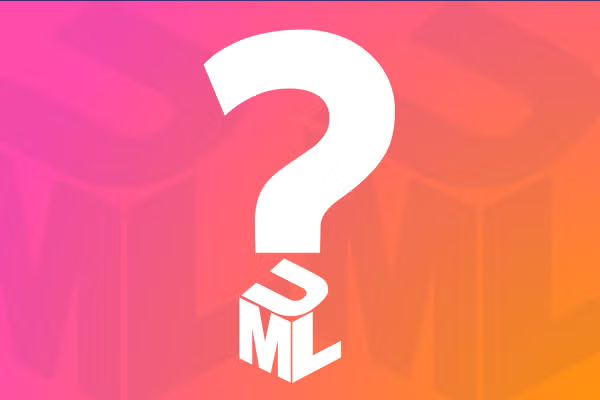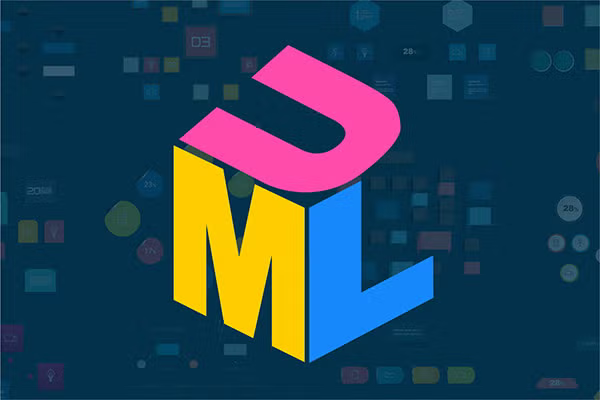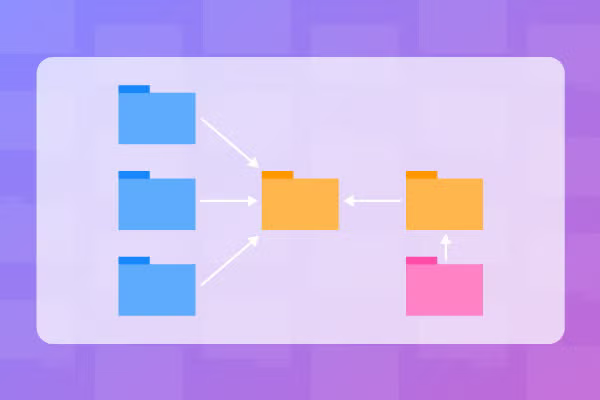UML is like the software engineer’s version of a blueprint. Whether you want to share a new idea or document the current structure of a piece of software, knowing how to use and read UML is a valuable skill. In this guide, you’ll get all the UML basics you need to share and collaborate.
Read on or jump ahead to one of the following sections:
- What is UML?
- UML Diagram Types and Templates
- Basic UML Diagramming Tutorial
- UML Video Tutorials
- UML Diagramming Tools
What is UML?
UML stands for Unified Modeling Language, which is a set of visual standards that helps software developers and engineers “speak the same language” without digging into the actual code of their product. Diagramming with UML is a great way to help others quickly understand a complex idea or structure.
Check out our blog for all the details on the origins and history of UML, why software engineers use UML diagrams and the benefits of UML diagramming, and common notations.

UML Diagram Types and Templates
There are 14 types of UML diagrams, organized into categories:
- Structural Diagrams
- Behavioral Diagrams
- Interaction Diagrams
Structural diagrams depict the static elements of an application, behavioral diagrams describe the dynamic functions of a system, and interaction diagrams show how the system functions over time in conjunction with other systems or users.
To learn more about each of the fourteen diagram types, see examples of each, or start diagramming from a template, check out our UML Diagram Types and Templates blog.

Basic UML Diagramming Tutorial
When you’re ready to start creating UML diagrams, this quick tutorial will show you all the basics, as well as tips and tricks to keep your diagrams clear and organized. While there are 14 different diagram types, the same best practices apply to making a great diagram.

UML Video Tutorials
For detailed tutorials on making some of the most popular UML diagrams, Gliffy has you covered. Each of our tutorial videos includes an example, recommendations about how to think about the structure of your diagram, and tips specific to using Gliffy for diagramming.
- How to Make an Activity Diagram in UML
- How to Make a Class Diagram in UML
- How to Make a Sequence Diagram in UML
- How to Make a State Diagram in UML
- How to Make a Use Case Diagram in UML
UML Diagramming Tools
You can draw with the Unified Modeliung Language on a whiteboard or paper if needed, but using an online diagramming tool like Gliffy is a great way to quickly draw and share diagrams with your teammates. Features like the ability to align shapes or use layers make it easy to keep even the most complicated diagrams organized. Gliffy also makes it easy to create and manage versions of your diagrams so that you can clearly document updates and changes or look back at an older version of your work.
It’s also easy to share links to your diagram or embed diagrams in other tools, which stay automatically updated as you make changes to your work. This ensures that your users or team never accidentally reference outdated documentation.
In addition to UML, Gliffy also supports the creation of other software engineering diagrams like cloud architecture diagrams, sequence diagrams, entity-relationship diagrams, data flow diagrams, and more. In fact, Gliffy is one of the most popular diagramming tools for software and development teams and boasts over 18 million users.
If a UML diagramming tool that’s powerful enough for any technical diagram sounds like the right fit for your team, check out our apps for Confluence and Jira, both part of the Atlassian ecosystem, or our standalone online diagramming app. You can get started with a free trial to make sure Gliffy is the right fit for your team.